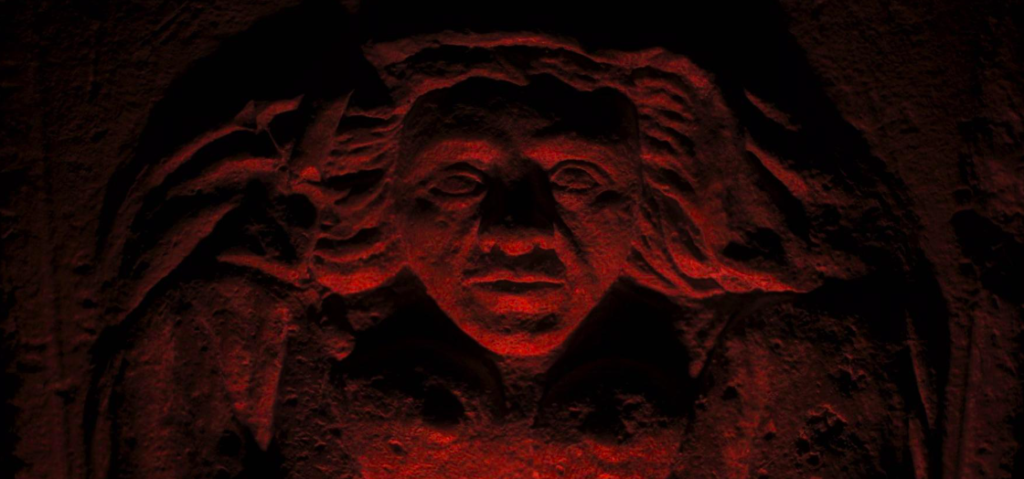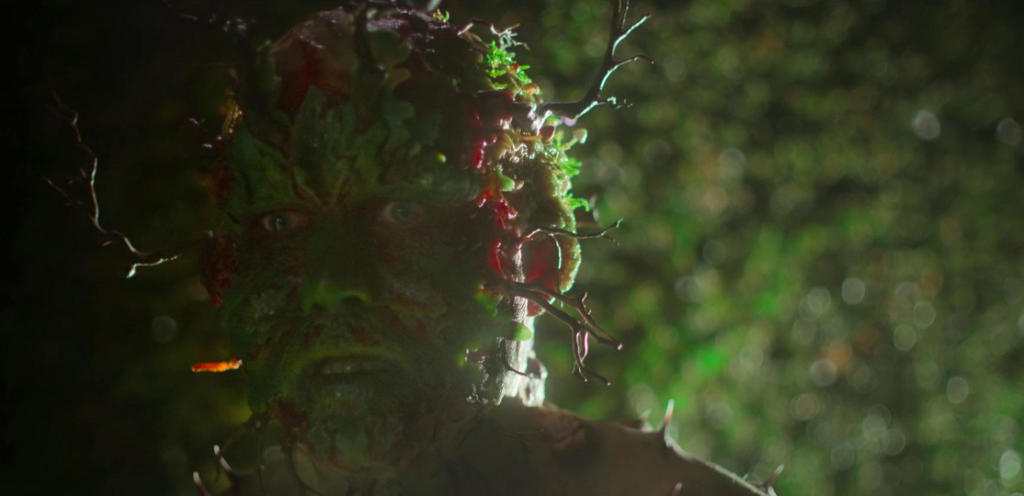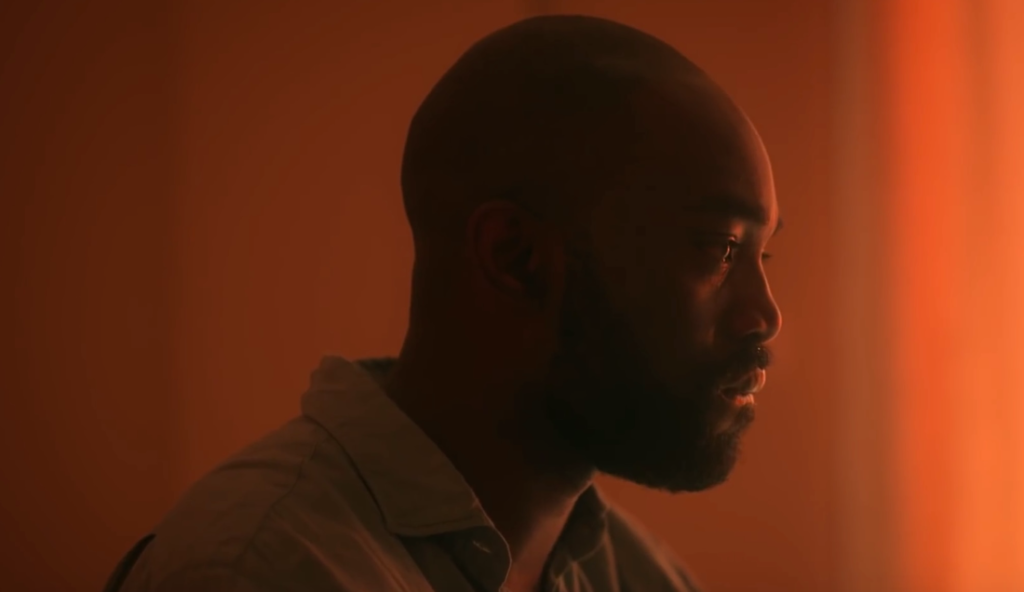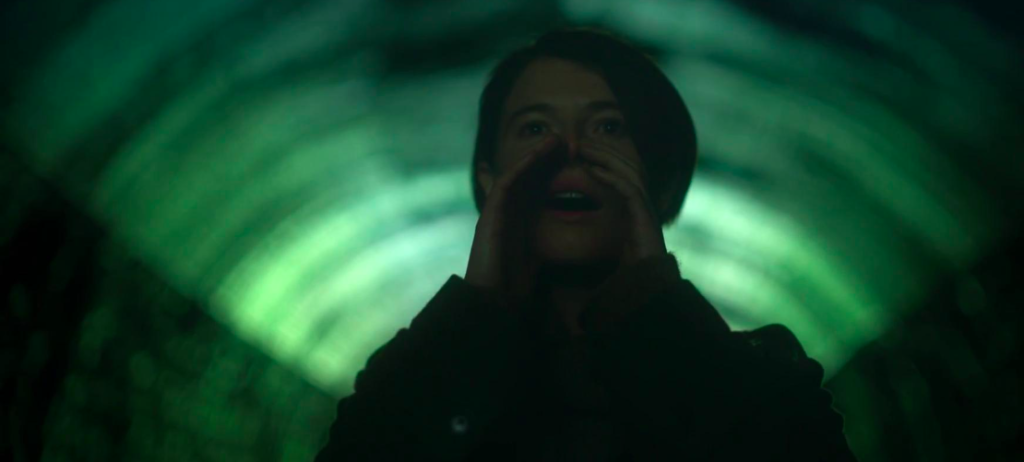Birth of a Patriarchy: Looking at the Wild Ending of Alex Garland’s ‘Men’ [Matriarchy Rising]

Men is not a subtle movie. With a jaw-dropping climax, the new horror film from Alex Garland delivers its anti-patriarchy message with all the force of a sledgehammer through a garden wall. The story follows a young widow named Harper (Jessie Buckley) who rents a luxurious house in the English countryside to recover from the trauma of her husband’s death by suicide. During her stay, she catches the eye of a variety of men from the neighboring village, all with pre-formed ideas about who she is and how she should behave.
Harper eventually discovers that they are all variations of the same man (Rory Kinnear). The film culminates in a shocking series of births as each produces another man, and another, and another as they chase her back into the house. Garland himself has been reluctant to explain his intentions, allowing audiences to find their own interpretations. But the ending of Men makes a powerful statement about the horror of patriarchal control and its insidious habit of cycling through generations, manifesting in different ways but all stemming from the same corrupt source.
Men’s shocking conclusion is brought to life with impressive visual effects and symbolic imagery. Having been chased through the house by a series of men from the village, Harper bolts the front door. But then she watches in horror as one man juts his arm through the mail slot. She drives a knife through his forearm. But the mysterious creature slowly drags his appendage out of the slot, bisecting it until his hand and forearm are split in two. This is reminiscent of a wound her husband suffered as he fell to his death. Yet the split hand also evokes images of the Devil, sometimes called Old Split Foot. Now in the form of a Vicar from a neighboring church, he attempts to sexually assault her in the bathroom. Harper defends herself by stabbing him then dragging his bleeding body outside.
No sooner has she done this than a naked man who’s been stalking her enters the garden. Now covered in leaves thrust into his slit skin, the man’s body begins to convulse and heave. He drops to the ground and gives birth to another fully formed man. Harper watches in horror as this cycle repeats itself over and over again. The newly born men drop to the ground to produce another fully formed man, each one a person she’s encountered in town. The scene itself is shocking and evocative, but what does it mean?

The answer to this question originates with several religious symbols found in the Vicar’s church. While wandering the woods near the house, Harper enters this church and finds a stone baptismal font adorned with two intricately sculpted figures known as grotesques. On one side is a face surrounded by decorative leaves. This type of grotesque is known as Green Man, thought to represent the merging of man with the natural world. The other side contains a Sheela Na Gig, the figure of a naked woman stooping to hold open her vagina.
While scholars disagree on the origin and meaning of these figures, many believe them to be pagan representations of nature and fertility. Though neither symbol is inherently good or evil, Garland’s men corrupt their intended meaning by using the symbols to enable a system of gender-based oppression bolstered by organized religion.
The positioning of these images is central to Garland’s message. Green Man is facing outward, his prominence a visual confirmation of male dominance in the church. The Sheela Na Gig is facing backward, as if the depiction of birth or the feminine body is something to be ashamed of or hidden away. As the sun goes down, the face of Green Man is bathed in bright and virtuous light. But hidden in shadows, the Sheela Na Gig is covered in a ray of deep red. Such a choice indicates sinister intention and vilification of the female form. It’s also no coincidence that these grotesques appear on the baptismal font, a source of spiritual nourishment for the congregation. The water stems from a corrupt interpretation of the natural world. Each drop carries symbolism used to perpetuate this patriarchal control.

Green Man and Sheela Na Gig become one with the climactic cycle of male births. But even here the meaning is corrupted. The naked man who’s been stalking Harper is not Green Man, only a self-appointed approximation. In an underground lair, we see him slice open his skin and insert the stems of leaves, creating a real version of the image from the font. He alters his appearance in order to use this symbol for his own agenda.
Then he mimics the Sheela Na Gig, opening a vaginal passageway on his own body. He does not give birth to a baby, but another man who will pervert this natural symbol to maintain his control. He’s a manifestation of God’s creation of Adam in his own image. Each man who is born represents the spread of patriarchy throughout the world, eternally reproducing itself to maintain control.
One obvious question arises from this scene and the fact that all of the men are played by the same person: Are all men guilty of supporting the patriarchy? The answer is both yes and no. While each person makes their own choices regardless of gender identity, all men born into western culture are also born into patriarchy. They are all baptized with the metaphorical water of belief that they were created to rule and women created to serve. This is especially true for white, straight, cisgender, and able-bodied men who stand at the most powerful levels of society. Not everyone who identifies as male supports this oppression, and some even fight against it. But all men reap the benefits of the societal structure called patriarchy that has dominated for generations.

The final cycle of this birth is Harper’s husband James. He enters the living room naked, but still covered in the injuries his body sustained when he fell to his death. Throughout the film, we’ve seen this tragic story unfold in a series of flashbacks, focusing on just after the moment Harper tells him she wants a divorce. Devastated that she would leave him, he tries to exert a horrific bit of emotional manipulation. He tells her he will kill himself if she leaves. As punishment for trying to have her own life, she’ll have to live it with the knowledge that her actions “caused” his to end. They have a physical altercation and she throws him out. In an attempt to climb back to the apartment through a window, he either falls off the balcony above or jumps, fulfilling his threatened price for daring to leave him.
James’s belief that his desires are more important than his wife’s harkens back to the baptismal font on which the male figure is placed with more prominence than the female one. James has been raised in a patriarchal society. Every message he’s ever received has stemmed from the belief that he is the real human and she is a subset, created not to have a life of her own but to serve his. While each man born from the faux Green Man is familiar to Harper in one way or another, James shows how this patriarchy directly affects her life.
She is horrified by the first birth, retreating in fear, but her shock begins to fade with each new cycle. She’s become accustomed to this form of dominance. Much like the devil portrayed in the film, Man’s greatest triumph lies in convincing the world the patriarchy doesn’t exist. But it is frighteningly real. It is in the air we breathe, the water we drink. It is everywhere. It’s not until it appears inside our intimate relationships that we see it for the horror it is.
James believes Harper owes him her life. When she asks what it is he wants from her, his response is, “love.” While this sounds good, romantic even, James is not really asking for love. He’s asking for devotion. He wants Harper to give herself to him. He wants the kind of love that would trap her in an unhappy marriage. As long as he gets the love he wants, he doesn’t care how she feels. And his threat to die by suicide shows the lengths he will go to maintain her servitude. Each man in the story wants Harper to give him a variation of this love. The Vicar wants to satiate his sexual urges and curiosities with her body. The boy wants to amuse himself by hunting her. Jeffrey wants her to entertain him with a song on the piano and a salacious story about her doomed marriage.

The film begins with Lesley Duncan’s “Love Song,” a haunting melody about life’s dependence on the emotional concept. Her lyrics do give meaning to the word. But they also describe love as a currency powering every aspect of life. The song says, “until you give your love, there’s nothing more we can do.” Harper must give her servitude to these men in order to keep living within the boundaries they’ve created. Duncan’s female voice sings these lyrics at the beginning of the film, indicating Harper’s internalization of this message. Part of her believes that her refusal to give James his definition of love is what ultimately leads to his death. The film concludes with Elton John’s version of the song, indicating Harper has now realized the fallacy in this message. It is no longer something she believes and she can see the external source from which it comes.
Harper becomes the target of these men because she refuses to give them her love. The men are attracted to her when she rents a traditional house as a single woman without the need of a man for support. The birth cycle begins after she refuses to play hide and seek with the boy and defends herself against the sexual advances of the Vicar. She is a woman who left her husband, refusing his cruel manipulations and calling his bluff. She does not intend for him to die and honestly mourns him. But she refuses to let his threats and physical violence keep her trapped in a life she does not want. Harper demands to have a life of her own.
Harper first becomes aware of the men during a beautiful sequence in which she creates echoes in a tunnel she stumbles upon in the woods. Using her own voice, she makes a sound that bounces through the tunnel’s long sides. She slowly adds to it, first creating harmony, then countermelody, and finally a cacophony of voices ringing through the natural surroundings. The man hears this freedom and seeks to control her. Harper’s voice carries power that threatens the system of control he depends on. Her actions will echo in other women who see her example and perhaps resist for themselves. The chorus she creates is the antidote to the patriarchal birth cycle of continued oppression. By refusing to give her love just because it is demanded, she becomes the key to freeing us all from a world of manipulative control.
Categorized:Editorials Matriarchy Rising News

